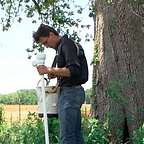Texas is the place that is known for oak trees — yet between post oaks and bur oaks, two of the most widely recognized types of oak trees in the Lone Star State, how might you tell which one you have in your yard? How would you take care of which? What precisely is the difference between the two species? Well, you’ve come to the perfect locations to find out!
POST OAK
What is a post oak?
The post oak tree (Otherwise known as the Quercus stellata also known as iron oak also known as unpleasant oak otherwise known as box white oak) is an individual from the North American white oak family. Known for its slower development rate, this deciduous tree commonly reaches a full height between 40 feet and 107 feet tall with a relatively slim trunk diameter of 1 to 2 feet across.
Where are post oaks found?
They’re found in a wide scope of landscapes — from dry to rocky to sandy to woodsy — in Massachusetts, Iowa, Florida, and that’s right, Texas, as well!
Where really do post oaks develop best?
While they’re intense enough for shifted environments, post oaks in all actuality do best in iron-rich, well-drained soil mixes like that of the Cross Timbers region here in Texas.
Post oaks love full sun exposure and require less and less watering as they mature, making them ideal for enduring dry season prone areas once fully developed.
How would you recognize a post oak tree?
Post oak trees are generally easily identified by their remarkably designed and generally finished foliage and the pale-yellow fluff on the underside of the dark green leaves. These leaves are normal, between 4 and 6 inches long with 5 projections.
The yellow fluff likewise runs along the twigs scattered all through the canopy. While the post oak bark can resemble other white oaks, it has a darker shade with all the more obviously characterized edges after looking into it further.
How to care for post oak trees?
Be extremely careful with how much moisture this tree receives in your yard. Since their needs for water are so negligible, they are likewise at high gamble of creating root rot if over-watered.
In the event that root rot is something you’re managing or need tips on preventing in your trees, look at our manual for Root Rot of Texas Trees
In view of this, be extremely careful spreading mulch around a post oak unless you’re certain of the immersion in the encompassing soil — mulch holds moisture!
Additionally, ensure the place of your post oak permits it to get immediate daylight for something like 6 hours consistently.
For what reason is a post oak called a post oak?
For your next random data night… the post oak is a particularly strong and tough wood in many soil types and impervious to rot and fire that it turned out to be generally utilized for cabinetry and woodworking yet particularly for fenceposts — subsequently, the wood type took on the name ‘post oak’!
BUR OAK
What is a bur oak?
The bur oak tree (or Quercus macrocarpa OR burr oak OR mossycup oak OR clean oak OR blue oak OR…) is likewise an individual from the North American white oak family. Altogether different in aspect from the post oak, this tree maximizes at around 80 feet with a trunk diameter of 5 feet.
Where are bur oaks found?
Bur oaks are generally native toward the North Central region of Texas and on up through a large part of the Midwest prior to garnishing out around Manitoba, Canada.
Where truly do bur oaks develop best?
This oak tree can be found naturally growing mostly in areas that are well-drained like along brooks and streams in damp woodlands, yet they likewise are known to spring up in grasslands and sandhills now and again.
They can deal with both antacid and acidic soils; however, their ideal soil is of a loamy assortment.
How would you distinguish a bur oak tree?
You know it’s a bur oak by the massive, fringed cap on its acorn — so massive that it seems as though the cap nearly swallows the entire acorn itself!
The bark of the bur oak is very dark with long edges, while its leaves are contrastingly light in examination however still a profound shade of green. They are around 10 inches long (significantly longer than the post oak’s) with a beautiful, cleaned top and dulled underside. Very veiny, also!
How to care for bur oak trees?
Similar to the post oak, this tree needs somewhere around 6 hours of direct sun exposure consistently.
Exceptionally dissimilar to the post oak, notwithstanding, the parched bur oak isn’t close to also appropriate for dry spell conditions.
Ensure for at minimum the initial 3 years subsequent to establishing that it’s given liberal watering and mulched well to guarantee a sound root framework lays out.
For what reason is a bur oak called a bur oak?
Something we’re certain you’ve been passing on to know… the name ‘bur oak’ comes from the cup of acorns resembles the thorny bur of chestnuts!
Regardless of Which Oak You’ve Got, TreeNewal Can Help!
Both post and bur oak trees need to be pruned every 2 to 3 years as they mature and afterward slice back to each 3 to 5 years once fully created. Take a glance at our post about How to Protect Oak Trees from Oak Wilt, as well, as oak trees are exceptionally prone to the gambling of oak wilt on the off chance that not pruned as expected.
For the most secure choice to prevent pruning cuts and oak wilt, depends on the professionals at TreeNewal to deal with it for you!
On the off chance that you need assistance with tending to your post and bur oak this spring season, reach out to the ISA-certified arborists at TreeNewal and appreciate tailored tree care advice.
